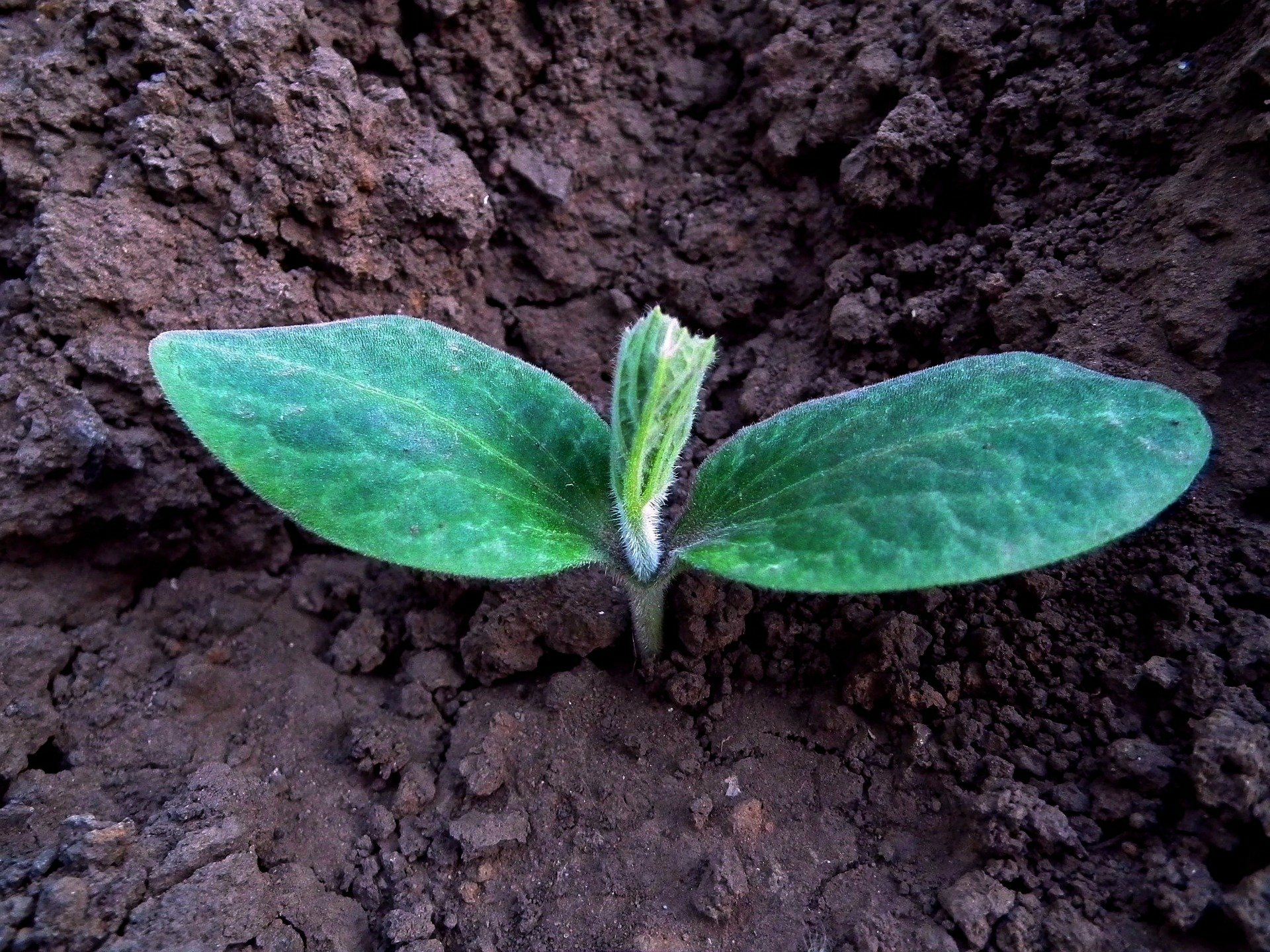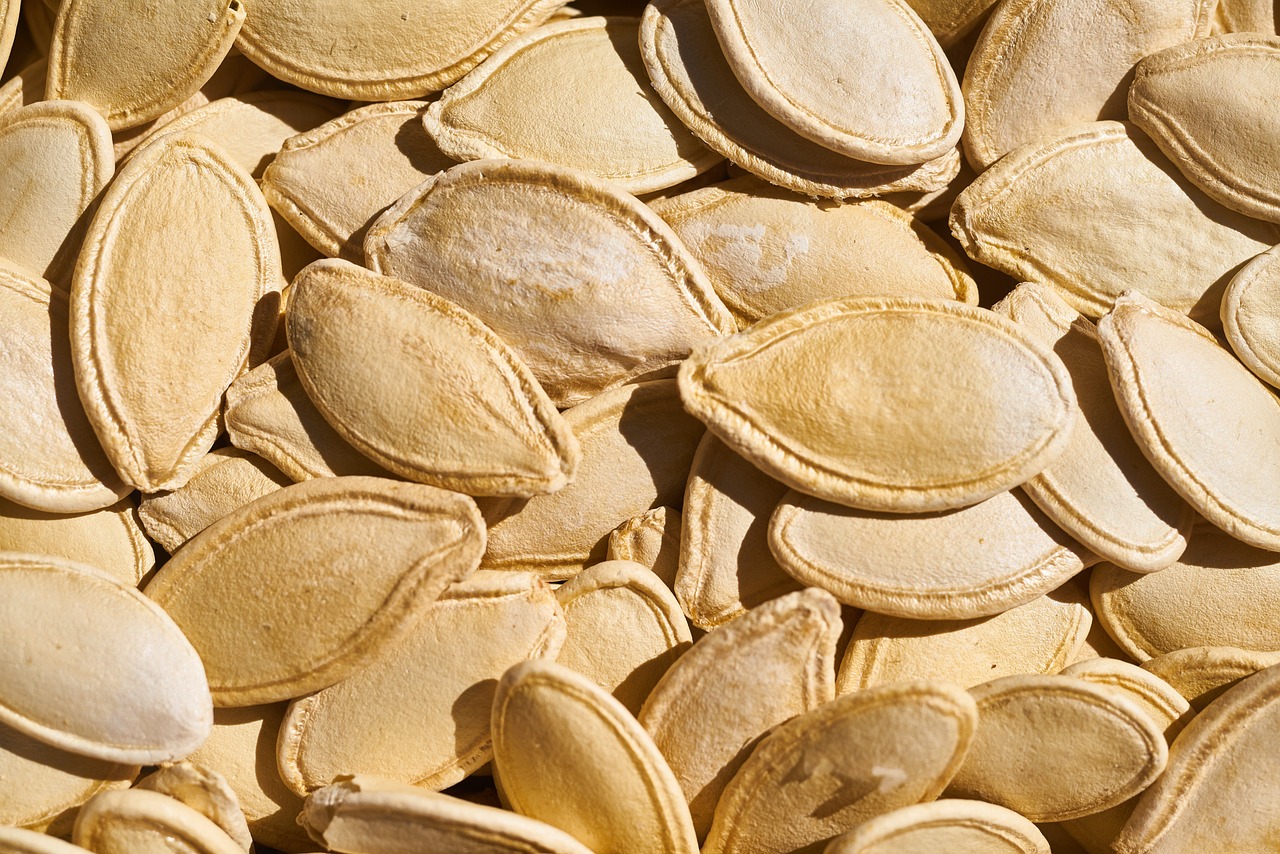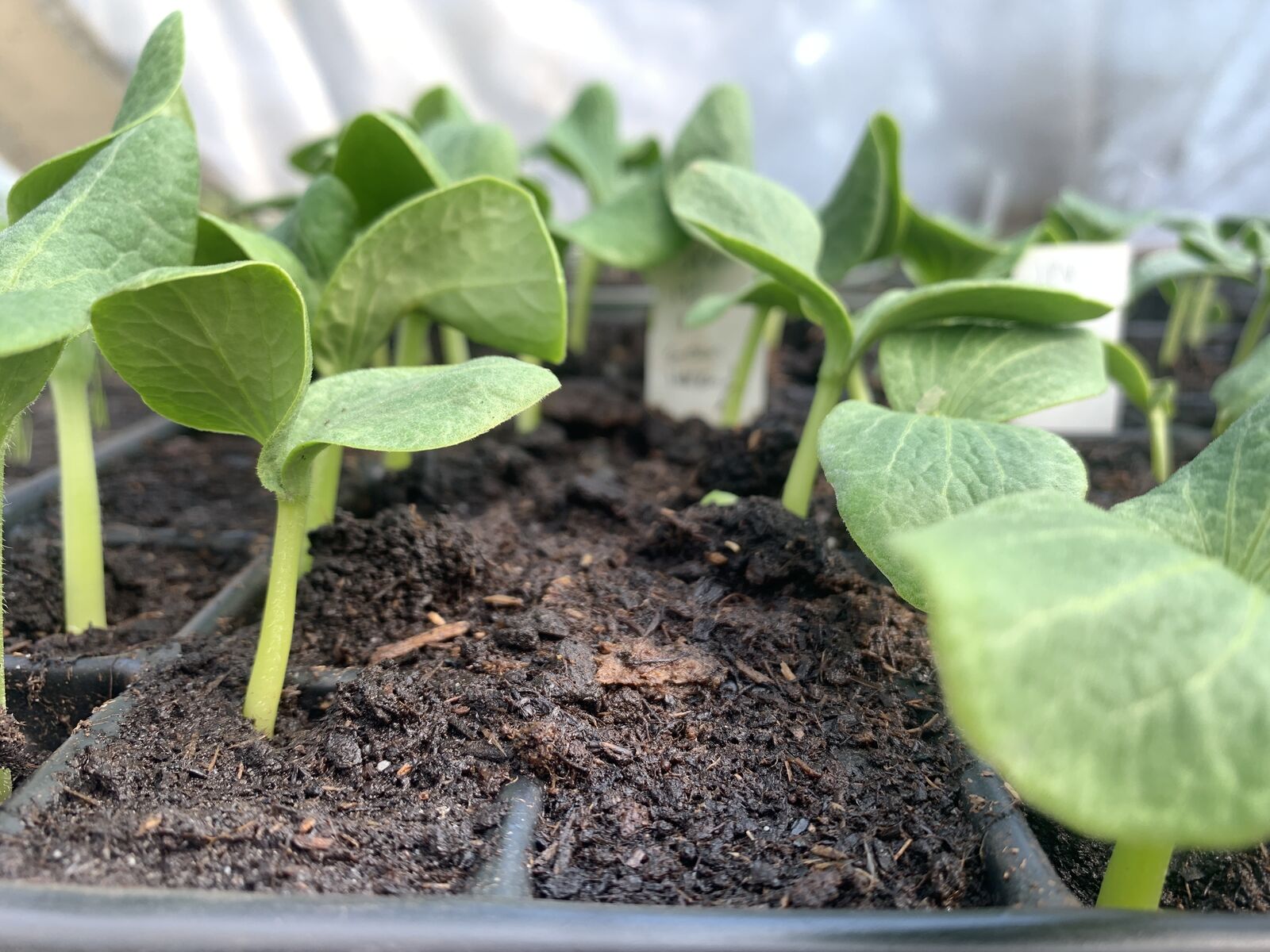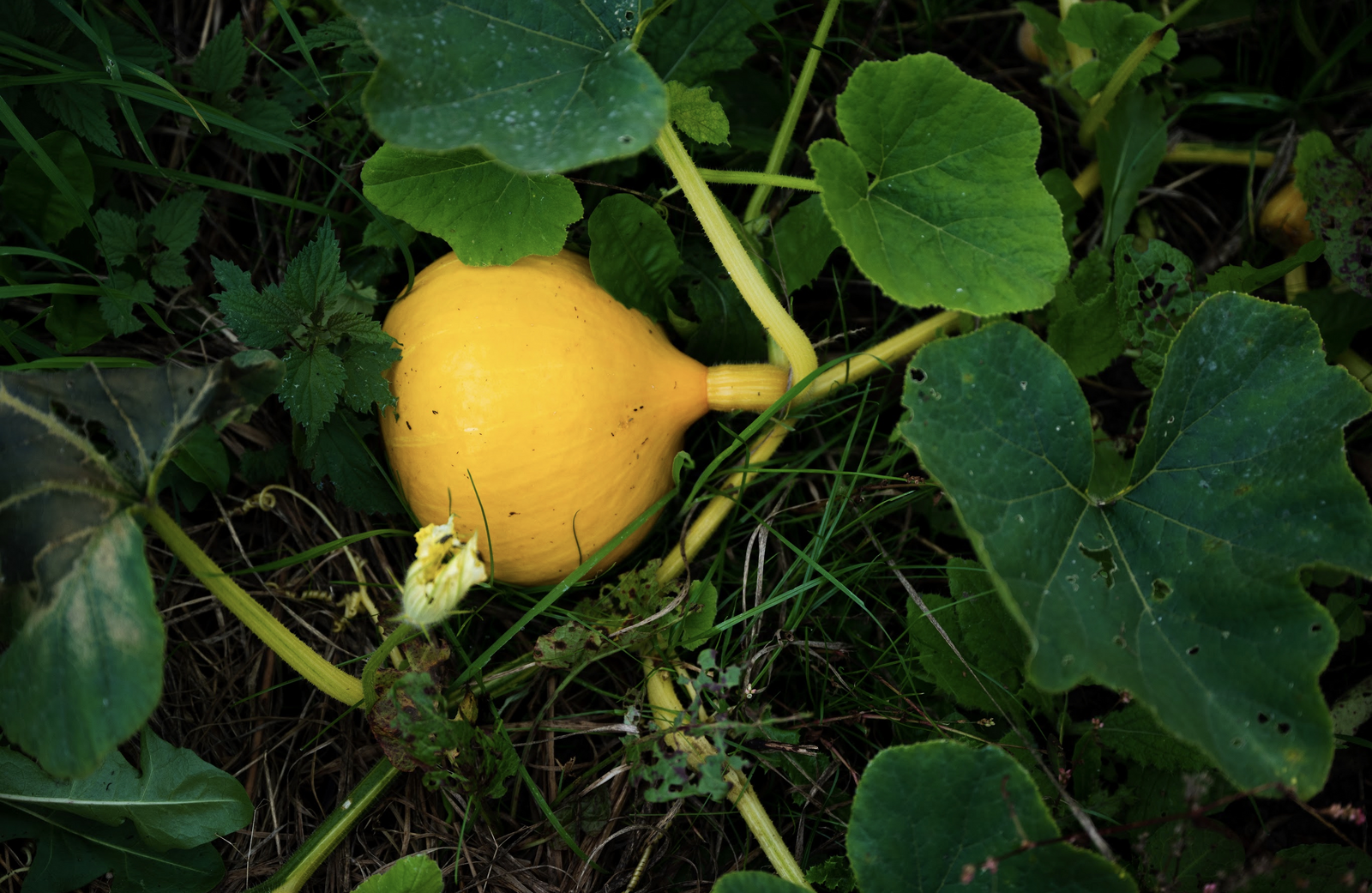
Sowing Pumpkin: Propagating and Direct Sowing
Pumpkins (Cucurbita) are plants that need warmth. In our latitudes, they are given a head start in growth and grown on the windowsill. This allows you to plant out strong young plants directly and benefit from their growth advantage with a rich harvest. However, direct sowing is possible depending on the region. In this article, you will learn how to pre-grow pumpkins or sow them directly. There are also instructions for planting out pumpkins.
This Article Contains:
Quick Overview
Pumpkin Cultivation (From Mid-April)
- Sow one seed per seed pot with the tip facing downwards
- Sowing depth: 2-3 cm/0.8 to 1.2 in deep
- Germination temperatures: 20 to 24 °C/68 and 75.2 °F; after germination: 16 to 20 °C/60.8 and 68 °F
- Germination time: one week
Planting Out the Pumpkin Plant
- After the last frosts
- Plant deeper into the soil than before for more stability
- Planting distance: 0.5 - 1.5 m/1.6 - 2.2 yd
Direct Sowing (After the Last Frosts)
- the soil temperature must be at least 10 to 15 °C/50 to 59 °F
- a snail fence or cold frame protects the seedlings from voracious visitors
Sowing Pumpkin Seeds: What You Need
- Organically produced pumpkin seeds of seed-resistant varieties
- Growing pots
- Alternative for potless cultivation: Soil Baler
- Potting Soil for seed starting
Our Tip: Find the Right Pumpkin Variety for You
As there are an incredible number of different pumpkin varieties, you can find an Overview of the Most Popular Edible Pumpkin Varieties here.

Propagate Pumpkin on the Windowsill: Sowing Pumpkin Seeds
When Are Pumpkins Sown?
So that you can plant out strong young plants in mid-May, you should start pre-cultivation about 2 to 4 weeks before the last frosts (mid/end of April), depending on the variety and environmental conditions.
Planting Pumpkin Seeds Correctly: How to Grow Them
From the middle/end of April, place one seed at a time , point downwards, about 2 to 3 cm/0.8 to 1.2 in deep in a small pot of potting compost. Pumpkin seeds are sown individually and not pricked out, as the roots of the pumpkin plant are fragile and do not tolerate pricking out well. It is therefore better to give each seed its own pot. At temperatures between 20 and 24 °C/68 and 75.2 °F, the seeds usually germinate within a week. A glass or foil over the pot can help to achieve the germination temperatures. After germination, cooler temperatures between 16 and 20 °C/60.8 and 68 °F are sufficient for the seedlings.


Would You Like to Plan a Bed?
With our bed planner, you can easily plan a colourful mixed crop. Good and bad companion plants are displayed directly and you get tips on succession planting and crop rotation!
Try the Bed Planner NowPlanting Out Pumpkin Seedlings
Pumpkin plants need to be hardened off before planting out in order to acclimatize to the environmental conditions and the weather. You should also prepare your pumpkin bed, as pumpkins are heavy feeders and therefore have high nutrient requirements. You can find out How to Harden off Your Pumpkin Seedlings and Prepare Your Pumpkin Patch in this article.
Planting Pumpkin Plants Outdoors: How to Do It
Now you can plant your pumpkin seedlings outdoors. Place the plants deeper in the soil than before. The plant will then develop additional roots, which will give it more stability. This is important because pumpkin plants have very fragile roots. Now water the plant well and apply a layer of mulch. As pumpkins grow very vigorously, you should allow plenty of space for the giants: there should be around 1.5 - 2 m/1,6 - 2,2 m between the rows and between 0.5 - 1.6 m/0.5 - 1.7 m in the row. One pumpkin covers about two square meters of bed area.
To ensure that your pumpkins thrive, it is important to look after your pumpkin plants. You can find out How to Care for Pumpkin in this article.

Sowing Pumpkin Directly
Depending on the location, sowing outdoors can be started after the last night frosts. In our latitudes, this is possible after the ice saints (mid-May). Pumpkin seeds only germinate from a soil temperature of at least 10 to 15 °C/50 to 59 °F. The seedlings and young plants are at the top of the snails' menu and will be happy to have a snail fence or cold frame until they are strong enough to withstand the molluscs. You can read more about Preplanting or Direct Sowing in this article.
We wish you every success with your pumpkin sowing! If you have any questions or comments, please write to us at magazin@fryd.app.
Want to get helpful gardening tips all year round and plan your own beds in the best possible way? Then register here or download the Fryd app for Android or iOS.
Fryd - Your digital bed planner
Cover picture by AllNikArt on Pixabay.
Marie
Current Topics in the Community

#red , #tuesday
Show 1 answer
Liked 2 times
#testpostcount

Dec 2025
Popular Articles

Companion Plants for Carrots: What (Not) to Plant With Carrots

Companion Plants for Celery : What (Not) to Plant With Celery?

Strawberry Types: List of Best Strawberry Varieties

Companion Planting With Strawberries: Companion Plants and Planting Plan

Basil Varieties & Types at a Glance

What to Plant With Cabbage: Good and Bad Companion Plants

Fertilizing Strawberries: Home Remedies & Natural Fertilizers at a Glance

Growing Sweet Potatoes: Tips on Cultivation & Companion Plants

Companion Plants for Kitchen Herbs: Chives, Parsley & Co

What Herbs Can Be Planted Together?
FAQ
Pumpkins should be grown about 2 to 4 weeks before the last frosts, i.e. around mid to late April.
How to plant pumpkin seeds correctly?
Pumpkin seeds should be placed in potting compost about 2 to 3 cm/0,8 to 1,2 in deep with the tip pointing downwards. They germinate at temperatures between 20 and 24 °C/68 and 75,2 °F.
How do you go about planting out pumpkin seedlings?
Pumpkin seedlings should be planted outdoors after the last frosts, deeper than before in the growing medium to ensure stability.
Is it possible to direct sow pumpkins?
Yes, direct sowing is possible after the last frosts if the soil temperature is at least 10 to 15 °C/50 to 59 °F.